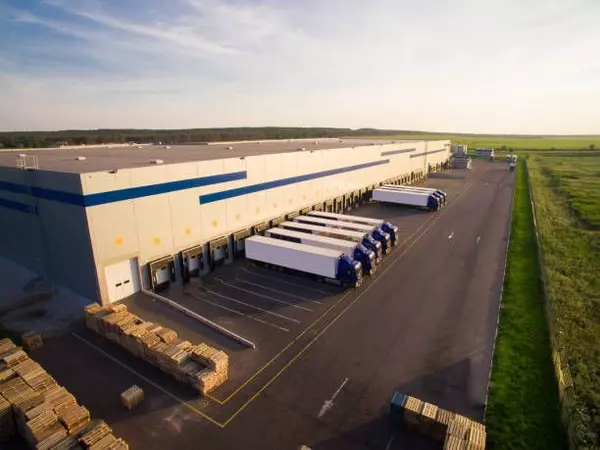From Vacancy to Vitality: The Inland Empire's Industrial Market Rebound
From Vacancy to Vitality: The Inland Empire's Industrial Market Rebound

The Inland Empire, a bustling hub for logistics and industrial activities in California, is experiencing significant changes in its real estate market. With a surge in leasing activities, particularly for logistics buildings, the market dynamics are rapidly evolving. This article explores the factors driving these changes and their implications for the future of this vital economic region.
---
The Inland Empire has been a cornerstone for industrial and logistics operations, serving major retailers and distribution networks. Recent trends indicate a pivotal moment as the demand for large and midsized logistics buildings shows a robust rebound. This write-up delves into the recent developments in the Inland Empire’s industrial market, the drivers behind these changes, and what they might mean moving forward.
Key Highlights
- Record Leasing Activity: The industrial market in the Inland Empire saw a record-breaking leasing volume, surpassing 10 million square feet in the second quarter of 2024. This represents a 40% increase over the average leasing activity observed between 2022 and 2023.
- Decreasing Availability: Logistics space availability saw a decrease for the first time since 2021, dropping the availability rate to 12.3%. This trend is in contrast to the overall industrial availability, which stabilized at 11.5%.
- Amazon’s Major Leases: Amazon significantly impacted the leasing surge, securing substantial space across the region, including a 220,000-square-foot lease in Corona and several million-square-foot facilities.
- Specialized Manufacturing Space Trends:** While logistics space availability is tightening, there is an increase in the availability of specialized manufacturing and flexible building spaces, balancing the broader industrial space market.
- Impact of Labor Strikes and Inventory Adjustments: Labor strikes and changes in inventory strategies by U.S. businesses in 2023 led to increased availability. However, 2024 has seen a resurgence in inventory build-up and e-commerce growth, particularly from companies like Amazon and third-party logistics firms.
- Future Market Tightening: With a shrinking construction pipeline and fewer new projects underway, a potential tightening of the market looms. This could lead to lower vacancy rates as demand continues to grow.
Detailed Analysis
The shifting dynamics in the Inland Empire’s industrial market are primarily driven by a strong resurgence in demand for logistics space. Several key factors are influencing this trend:
1. Resurgence in Business Inventories and E-commerce:
Business inventories are on the rise in 2024, aligning with increased e-commerce sales. This surge has prompted distributors and third-party logistics companies (3PLs) to actively seek leasing opportunities. Many firms are securing space in anticipation of potential tariffs and import challenges.
2. Amazon’s Strategic Expansion:
Amazon’s strategic leasing decisions have significantly impacted the market. Following a pause in new leases in 2023, Amazon’s renewed expansion efforts have absorbed considerable available space, underscoring the persistent demand for large, modern logistics facilities.
3. Market Comparisons:
The Inland Empire stands out compared to the industrial markets in Los Angeles and Orange County due to its larger, more modern logistics buildings. This appeal is reflected in the higher availability rates in the adjacent markets.
4. Construction Pipeline and Supply Constraints:
The region’s construction pipeline has decreased from 45 million square feet in mid-2022 to 23 million square feet. This reduction signals a slower pace of new supply entering the market, potentially leading to tighter market conditions as tenant demand remains robust.
Conclusion
The Inland Empire’s industrial market is at a crucial turning point. With rising demand for logistics space and a constrained supply pipeline, significant changes are on the horizon. As businesses continue to adapt to post-pandemic realities and the growth of e-commerce, the Inland Empire is set to remain a pivotal player in the industrial and logistics sectors. Keeping an eye on these trends will be essential for those navigating this evolving market.
---
Quick Takeaways
- Leasing Surge:** Over 10 million square feet leased in Q2 2024, marking a 14-quarter high.
- Logistics Space Tightening:** Availability dropped to 12.3%, the first decrease since 2021.
- Amazon’s Influence:** Key leases in 2024 helped stabilize the market.
- Evolving Availability:** Specialized manufacturing space saw increased availability.
- Future Prospects:** Potential tightening of vacancy rates due to supply constraints.
Stay updated as the Inland Empire continues to adapt and evolve in response to the changing demands of the industrial and logistics sectors.
---
This article is based on insights from CoStar Analytics and data as of June 2024.
Recent Posts










